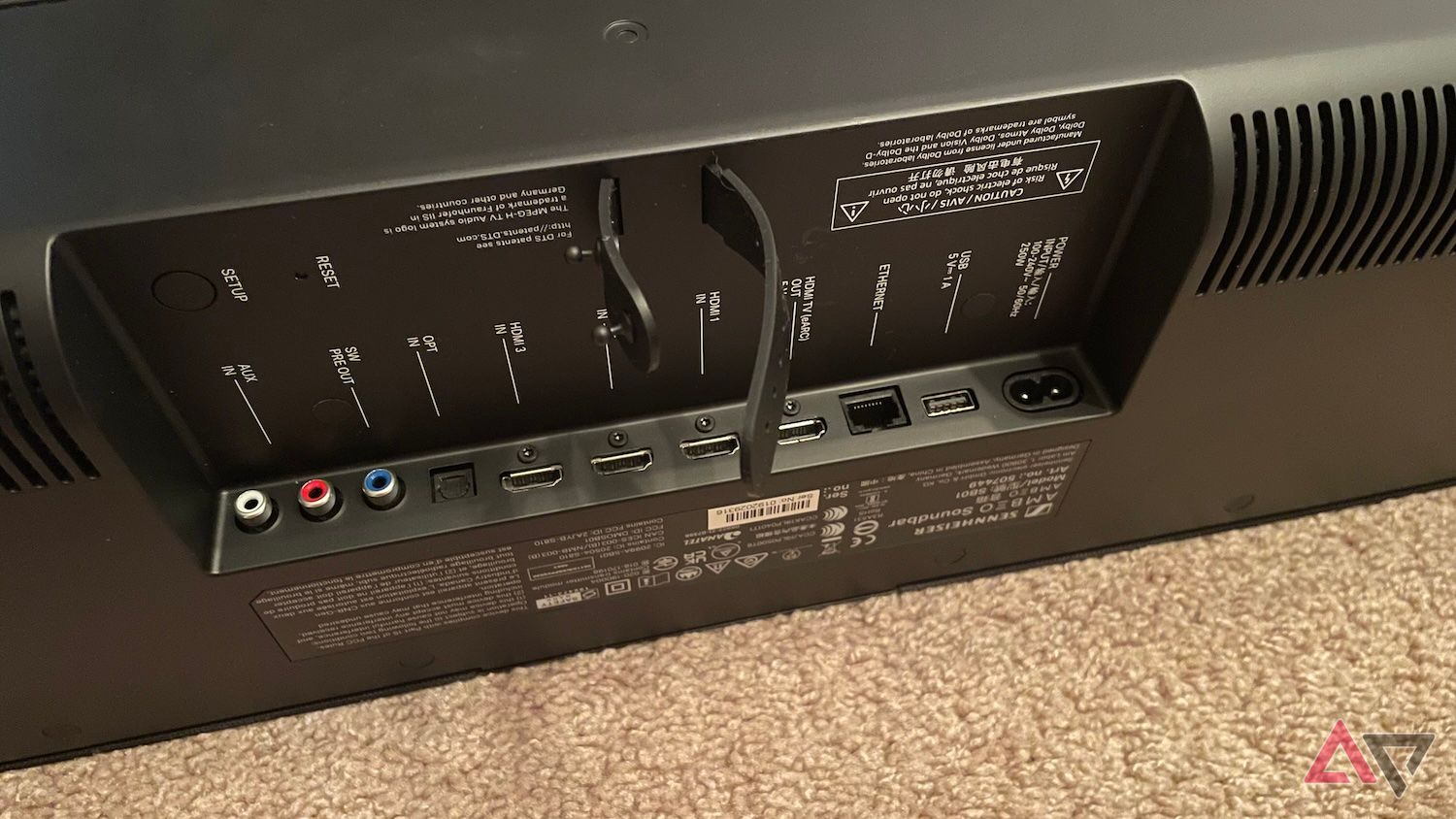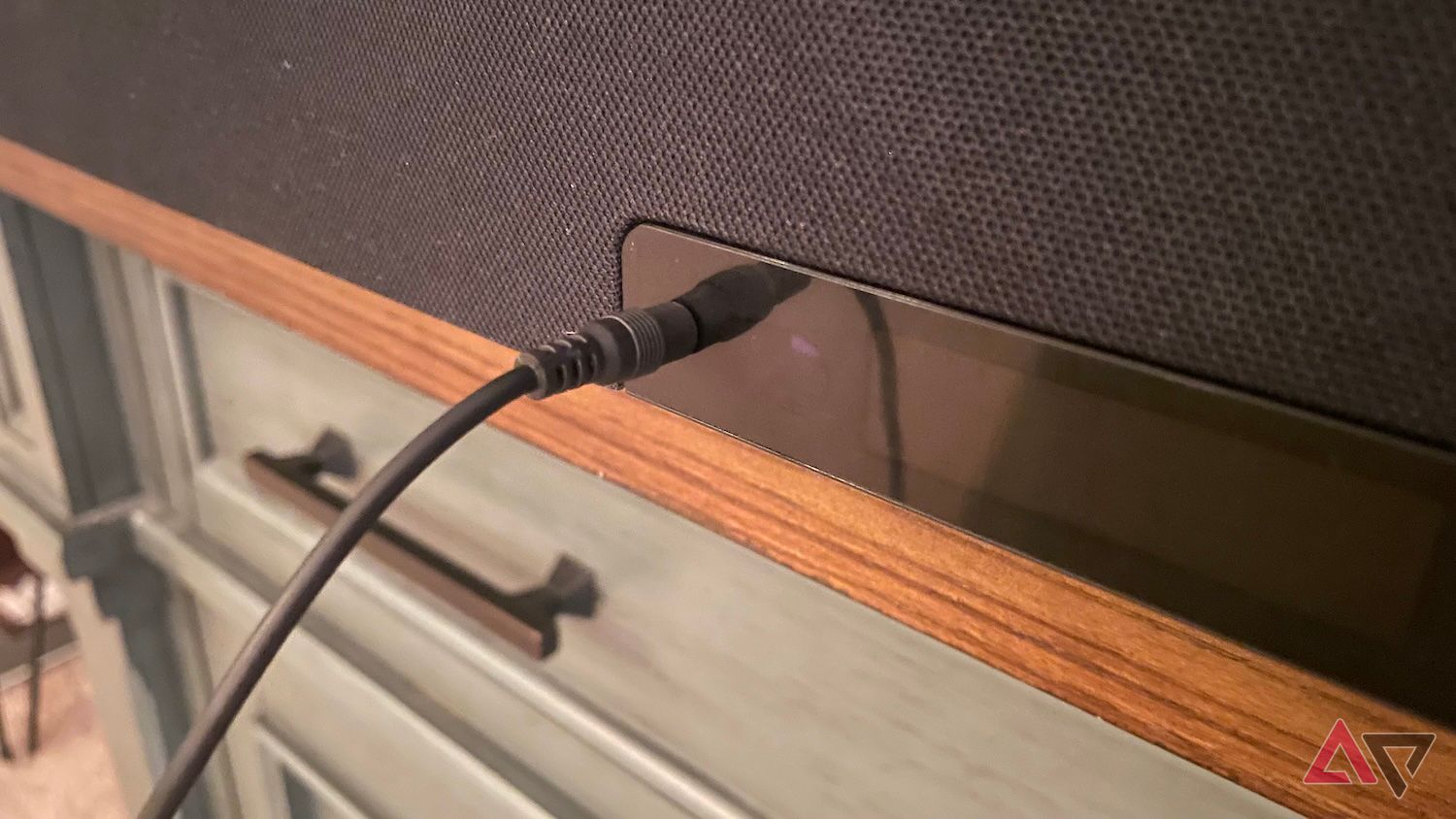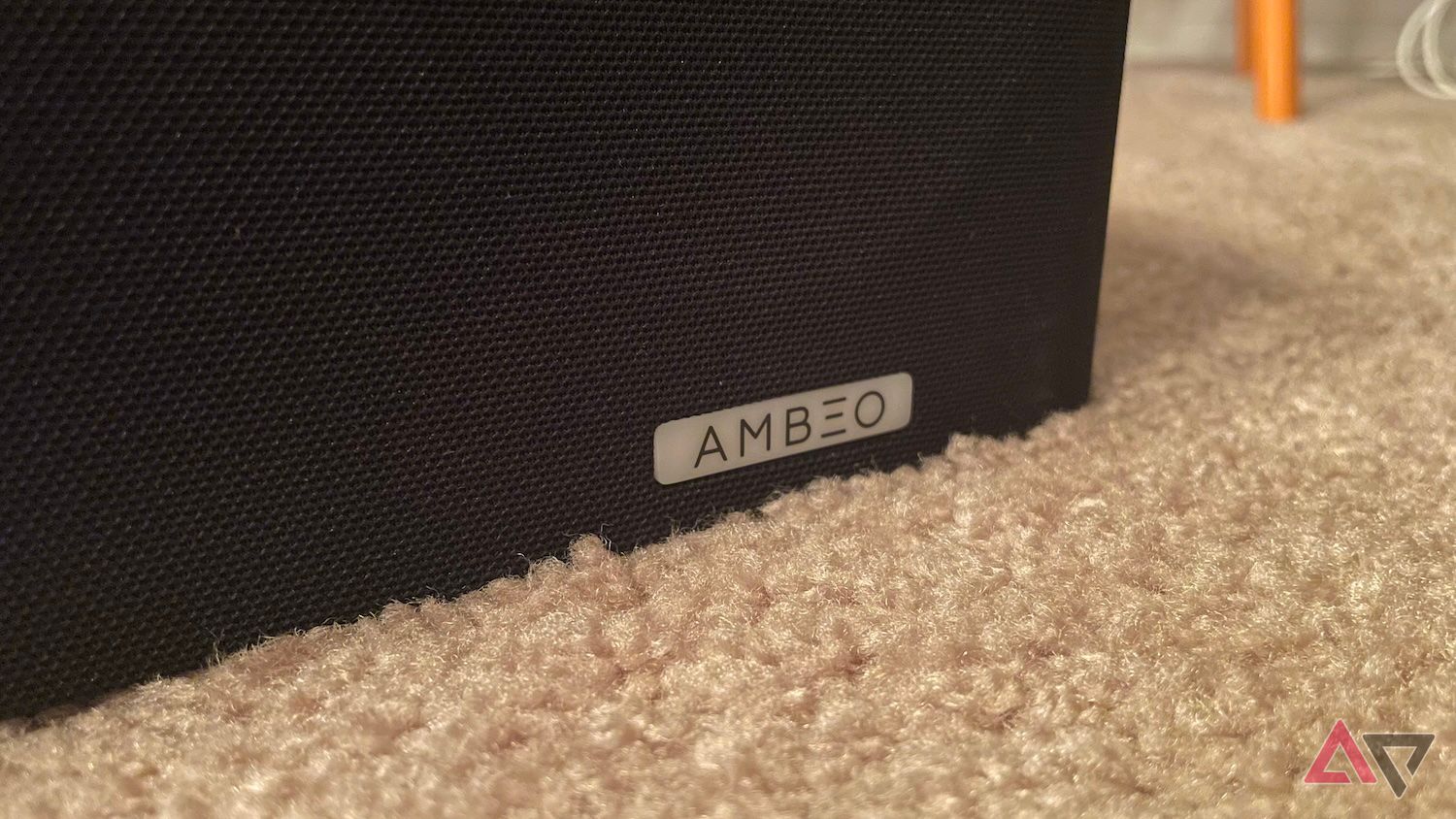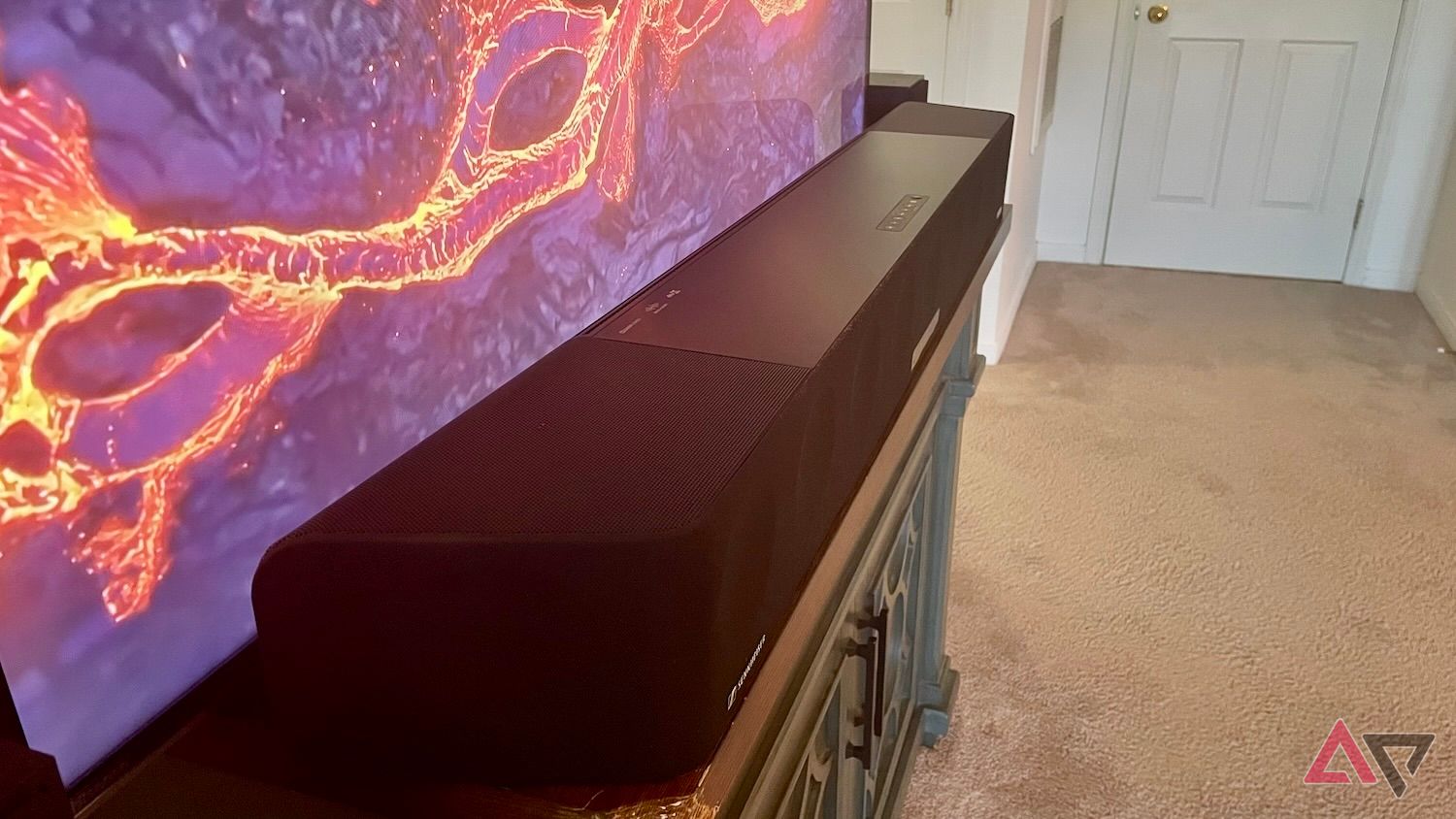I used to fight tooth and nail against surround sound virtualization, especially Dolby Atmos. For those not in the know, this is a speaker or soundbar’s ability to emulate a complete, multi-speaker system. Virtualization requires a sound balance of calibration tools and proper acoustics; in my opinion, the effect is rarely convincing. I love being proven wrong by home theater components, though, and that’s exactly what happened with the Sennheiser Ambeo Max.
Bear in mind, this flagship peripheral from the prestigious German audio company costs more than some decent used cars, so I would have been awfully upset if its Atmos skills weren’t up to snuff. Fortunately, I was completely blown away, to the point where I might opt for Atmos emulation on my own dime now.
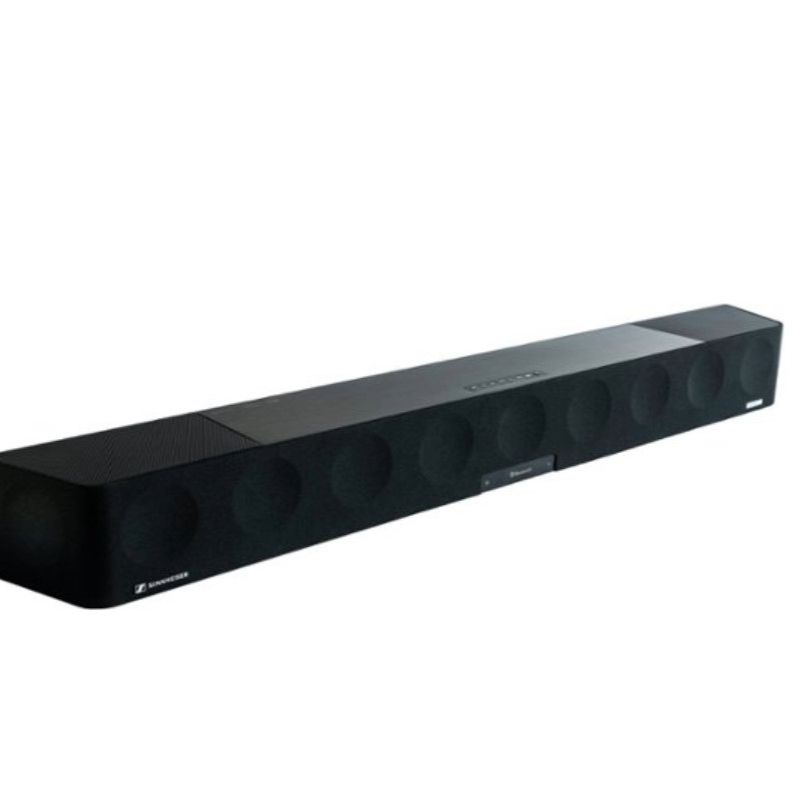

Staff pick
Sennheiser Ambeo Max
$2000 $2500 Save $500
Behold the pinnacle of soundbar technology. The Sennheiser Ambeo Max may cost a pretty penny, but this formidable 5.1.4 Dolby Atmos soundbar packs quite the punch. From its full-bodied soundstaging to its powerful and detailed sound quality, you’re going to need some serious real estate to house this bad boy. But once you’ve made the space, we assure you that you’ll never want it to leave.
- Mind-blowing sound quality
- Amazing Atmos virtualization
- A plethora of useful ports and inputs
- Stellar codec support
- Solid companion app
- Very expensive
- A heavy and obtrusive soundbar to work with
Price, availability, and specs
The Sennheiser Ambeo Max was released in 2019, but when audio components work well, manufacturers tend to keep production up as long as possible. That being said, you’ll be able to find the Ambeo Max at major retailers like Amazon, Best Buy (online and in stores), Crutchfield, and Sennheiser.
The soundbar normally costs $2,500. However, as of the publication of this review, it’s marked down to $2,000 at Amazon, Best Buy, Walmart, and Sennheiser.
Design
Here’s hoping you have sizable furniture
Let’s first address the elephant in the room: The Ambeo Max is enormous (if there was a super-italics setting, I’d use it). Standing over 5 inches tall, nearly 50 inches wide, and close to 7 inches from front to back, this is a purchase you’ll want to triple-check your furniture measurements on. In fact, if your TV isn’t wall-mounted already, you may have to do so, especially if it’s smaller than 55 inches. The magnitude of the Ambeo Max will likely eat away at screen real estate for tabletop TVs. I’m the perfect example: I had to make a booster seat for my own QLED with a few big books.
A gray canvas grille wraps around the front and sides of the soundbar, which gives way to black plastic on the top and back. Hanging out behind the canvas is an impressive array of 1-inch tweeters (5x), 4-inch long-throw woofers (6x), and 3.5-inch up-firing drivers (2x). For those keeping score, that’s 13 speakers total.
Connections
Inputs, codecs, and wireless standards a-plenty
Premium soundbars usually incorporate AV switching, and the Ambeo Max is no exception. You’ll find three HDMI 2.1 ports, an HDMI eARC output, digital optical, an analog stereo input, an LFE output for a dedicated subwoofer, an Ethernet for hardwired networking, and a USB service port. The Max also supports Wi-Fi and Bluetooth connectivity.
As far as codecs go, the Ambeo Max offers brilliant Dolby Atmos and DTS:X decoding and will upconvert traditional surround and stereo signals. MPEG-H is another superb coding that the Max speaks the language of, though you’ve probably heard less about it than you have Atmos and DTS:X. In use for nearly 10 years now, MPEG-H is a type of 3D virtualization that breaks audio down into small, fine-tunable parts. These customization elements cover everything from dialogue enhancement to background sound adjustments.
Like the JBL Bar 1000 (another phenomenal Atmos soundbar), the Ambeo Max features room-calibrating software that optimizes your surround experience based on the room your soundbar is located in.
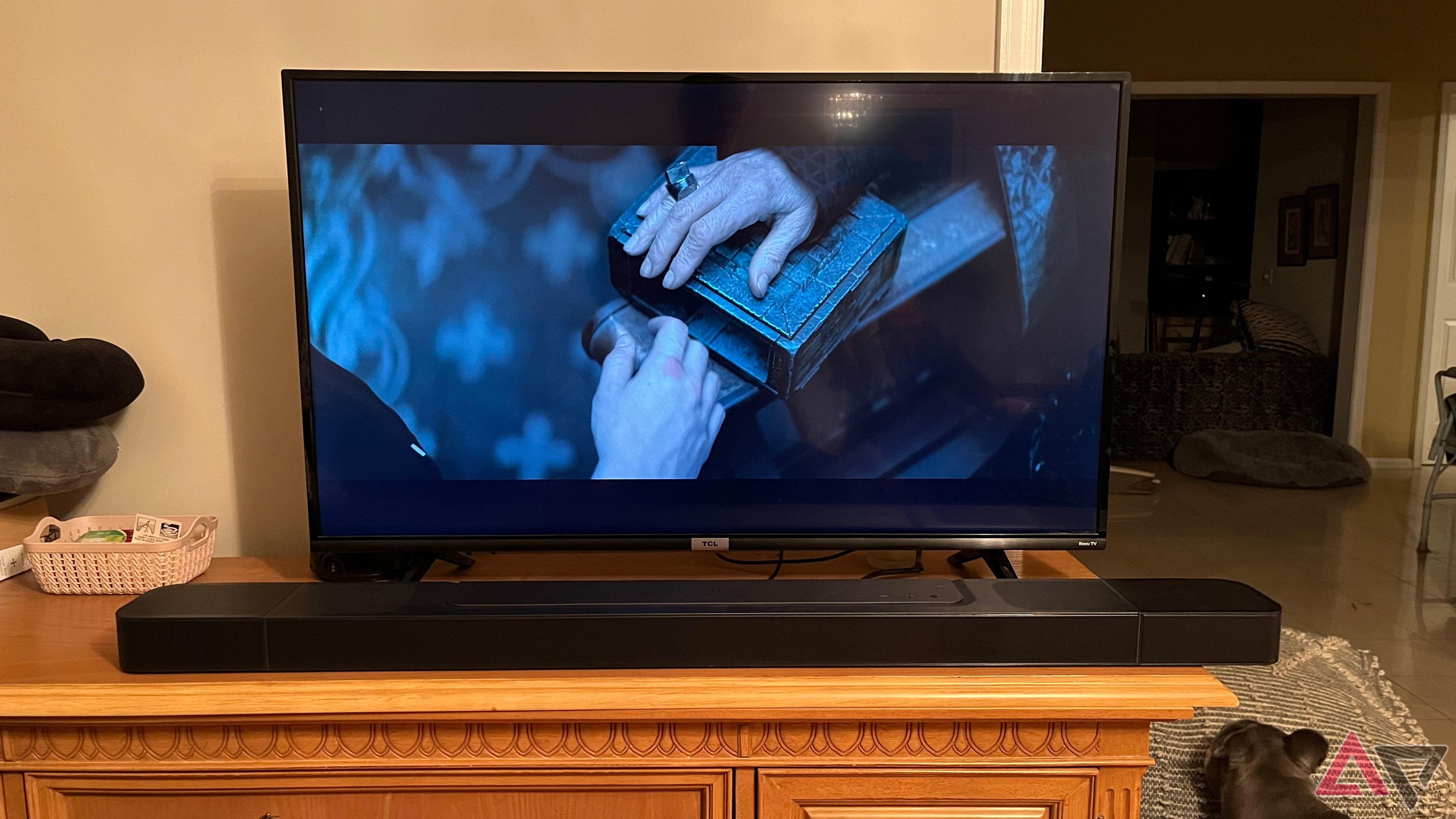
Related
JBL Bar 1000 review: Surround sound all around us
With Atmos surround sound and a lot of power, the Bar 1000 brings home theater immersion in soundbar form
The Ambeo Max also supports Chromecast, Apple AirPlay 2, Spotify Connect, and Tidal Connect.
Setup
Phone a friend
When setting up the Ambeo Max, I highly recommend having a friend or family member on standby. I did a lot of the setup myself, but once or twice, I needed to ask my girlfriend to connect cords while I cradled the Ambeo Max in my arms. It’s an extremely heavy soundbar, making something as simple as connecting HDMI cables more arduous than normal.
If you plan on utilizing Atmos and DTS:X compatibility, remember that you’ll need every component in your AV chain to pass Atmos and DTS:X codecs down the line. For best results, I recommend connecting the soundbar’s provided HDMI to the eARC port on both the Ambeo Max and your TV. While the digital optical connection supports various surround formats, it won’t decode Atmos or DTS:X.
Once everything was wired up, I connected the antenna-style microphone and performed a room calibration. This only took about four or five minutes. What took forever was getting my iPhone 12 paired up with the Ambeo Max. Believe it or not, my dang Otterbox Defender case was the issue. The tough shielding was suffocating my phone’s NFC signal. Once removed, I was able to pair my phone to the soundbar via NFC. After a 5-minute software update, the Sennheiser Smart Control app was going strong.
Sound quality
Frighteningly accurate deliverables
Does the Ambeo Max really deliver $2,500 audio? Oh yes, it does, friends. As I said, I’m the biggest skeptic in town regarding regular ole’ 5.1 virtualization, never mind Dolby Atmos and DTS:X. But after putting the Max through its paces, I’m proud to call myself a virtualizer convert.
Netflix’s Society of the Snow is a heart-wrenching adaptation of a true story, with one of the most visceral plane crash sequences ever put to film. Things kick off around the 12:15 mark when the first surge of turbulence rocks the vessel. It only gets worse from here, and as the poor passengers start taking note, I could truly feel the mania. I went so far as to close my eyes and pretend I was there, and the immersion was disturbingly spot-on.
I’ve never heard Atmos virtualization like this. Passengers yelling up and down the aisle sounded near and far, but all at ear level. The plane’s engine noise and additional bouts of turbulence lived above and around me. I stood and walked around. There was audio all over the room, and it was uncanny how big of an impact the up-firing drivers were making.
Around the 14:00 mark, the plane crashes. There’s a brief cutaway to the rear of the aircraft tumbling through the Andes. It’s a small reprieve that juxtaposes disaster against the whipping winds of the mountain range.
Next up was director Jeremy Saulnier’s Hold the Dark. There’s an intense shootout scene about an hour and ten minutes into the film. A man fires machine gun rounds from an upstairs window as law enforcement scrambles for cover. Rounds rang out all around me. What impressed me most was how much articulation the sibilance added. I could close my peepers and tell you it was gunfire in open, wintry terrain.
As the sequence carries on, we cut away once or twice to the gunman’s position. Low-end frequencies lent extra aggression to each blast. I could hear officers yelling commands to each other in one far corner of my living room while terrified dogs barked in another.
Muse: Live at Wembley Studio is a brilliant encapsulation of the British three-piece’s career up to “Black Holes and Revelations,” and the Ambeo Max had an absolute field day with this concert performance. Opening number “Knights of Cydonia” kicks in with a big blast of guitar, bass, drums, and frontman Matthew Bellamy’s iconic falsetto.
Sitting just 8 feet away on my couch, the sound filled every square inch of the listening space. The “feeling like you’re at the concert” descriptor is oft-tossed around in audio reviews, but there’s not an ounce of hyperbole in my words. It truly sounded like I was part of Muse’s ecstatic audience.
Subdued tunes like “Soldier’s Poem” swap electric guitars for a singer-songwriter experience. The sweeping ballad echoed from floor to ceiling as Bellamy’s crooning and acoustic guitar plucks took center stage. Gentle brush strokes on the snare, accompanied by light xylophone taps, were symphonic touches that could bring a tear to your eye.
Dream Theater’s “Six Degrees of Inner Turbulence” is a progressive masterpiece that opens with the heavy-hitting “The Glass Prison.” Bell tolls and harmonic bass notes open the track, an unusual beginning that the Ambeo Max delivered beautifully. Not long after, guitars, drums, and synth barrels in, instruments that soared around my living room in a melodic frenzy.
Personally, I didn’t see much need for the Max’s LFE output. This bodes particularly well for apartment dwellers like me, who can’t bear the idea of putting neighbors through the rumbles of a dedicated sub. That being said, if you can manage a standalone woofer, you may want to add one at some point.
Sennheiser Smart Control
If you don’t use the app, you’re missing out
I’ve used the Sennheiser Smart Control (for iPhone and Android devices) app before, but that was for a pair of wireless earbuds. It’s a completely different experience for soundbars, though; the interface is packed with various settings and optimizations.
The main control dashboard clones most of the remote control’s capabilities to your mobile device (e.g,. input switching, preset toggling, volume controls, etc.). One of my favorite app features was the ability to fine-tune audio presets. You can choose from Movie, Music, News, Sports, and Neutral modes, and you can customize presets further by tapping the “Edit” button.
Within each of these mini-dashboards, you can choose how intense the Ambeo 3D surround effect is (choose from Light, Regular, or Boost). There’s also a four-band EQ that lets you enhance or reduce bass, mids, and treble. My preferred configuration was as follows: Music preset with Ambeo set to Regular, Foundation set to +4db, Low-Mid set to +2.5db, Clarity set to +2.5db, and Brilliance set to +2db.
You’ll find additional customizations in the main Settings menu. This includes tabs like Network, Audio, User interface, and System (where you’ll find available firmware updates).
The competition
Slim pickings, but a couple of noteworthy foes
Soundbars that cost more than $1,000 live on a planet all their own, far superseding some of the more rudimentary enhancements that less expensive peripherals provide for movies, TV shows, and gaming. As for the Ambeo Max’s competition, not much can top it, but the Sony HT-A9000 is one fierce rival. Arguably, it delivers deeper bass than the Ambeo Max, and costs far less ($1,400 as of the publication of this review).
We’re also big fans of the Sonos Arc. Not only does it deliver an exceptional Atmos experience, but you’ll also be able to link the soundbar up with any other Sonos speakers in your home. It’s also not as expensive as the Ambeo Max.
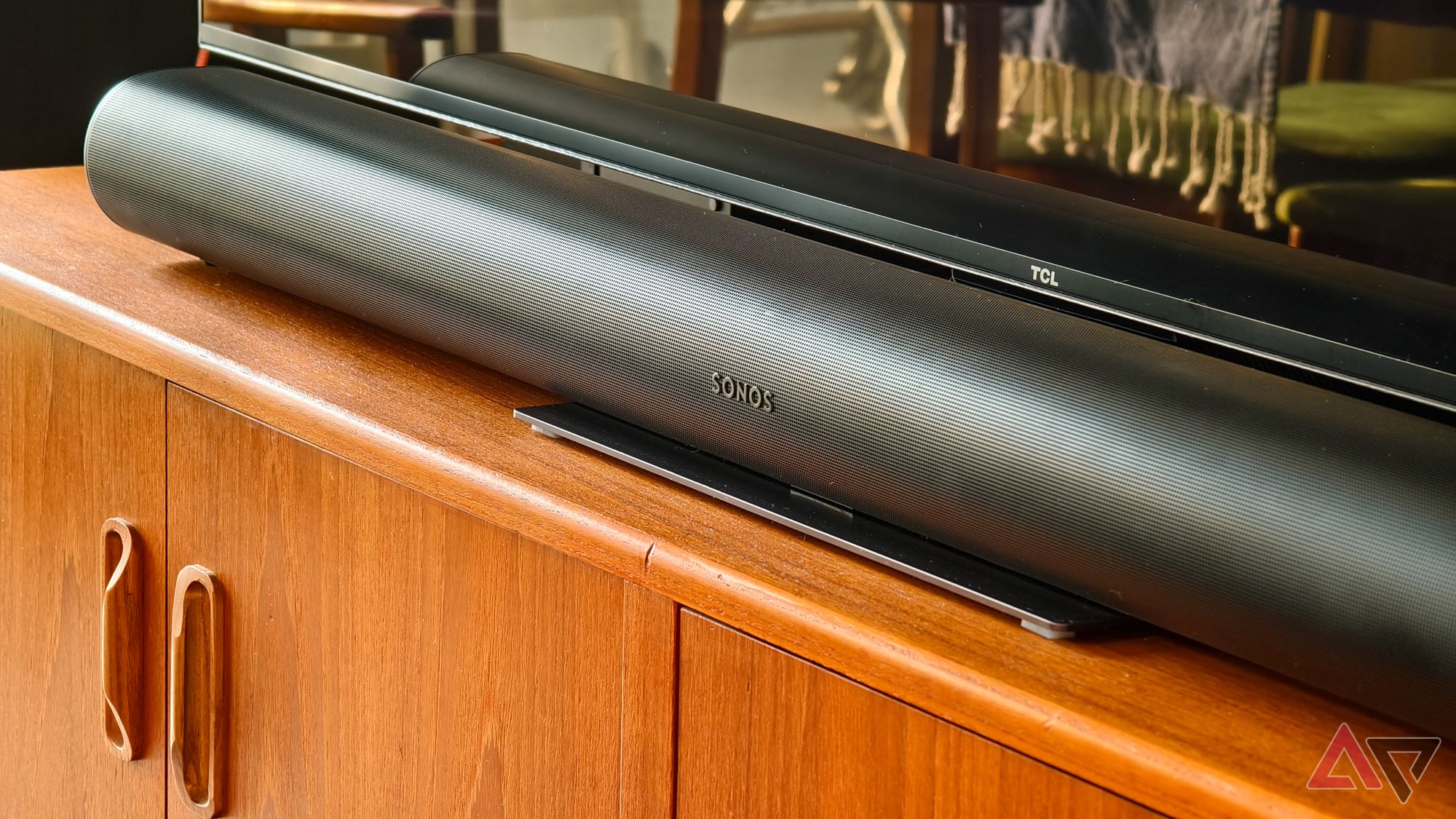
Related
Sonos Arc review: More than you need, exactly what you want
The Arc is the best soundbar around for big rooms where money doesn’t matter
And let’s not forget the JBL Bar 1000 7.1.4 Soundbar that we mentioned earlier. This amazing soundbar is $800 less than the Ambeo Max, and uses audio calibration tools to tune the JBL Bar 1000 to best-match your listening environment.
Should you buy the Sennheiser Ambeo Max?
If you can afford the mighty splurge, the Sennheiser Ambeo Max is one of the best soundbars I’ve ever heard. It’s also the device that fully convinced me that Atmos virtualization isn’t just some fantasy that audio companies want us to buy into.


Staff pick
Sennheiser Ambeo Max
$2000 $2500 Save $500
The Sennheiser Ambeo Max delivers unparalled sound quality and is a more-than-fitting replacement for a fully-wired Dolby Atmos surround system.

Related
Best Dolby Atmos speakers in 2024
Finding the best Dolby Atmos speakers is challenging, but we’ve picked out the best options
Source link

